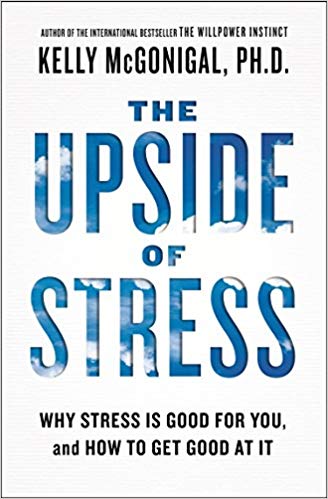Stress is something we all face every day. Whether the source is at home or at work, with your team, or your own tasks, it's easy to get the best of you.
Workplace stress in particular can be tough. There's things we all deal with that are beyond our control that can make work harder than it should be. How you handle stress can make all the difference for you and your team.
Today, we're giving you 8 approaches you can start using today to reduce, manage, and thrive under workplace stress.
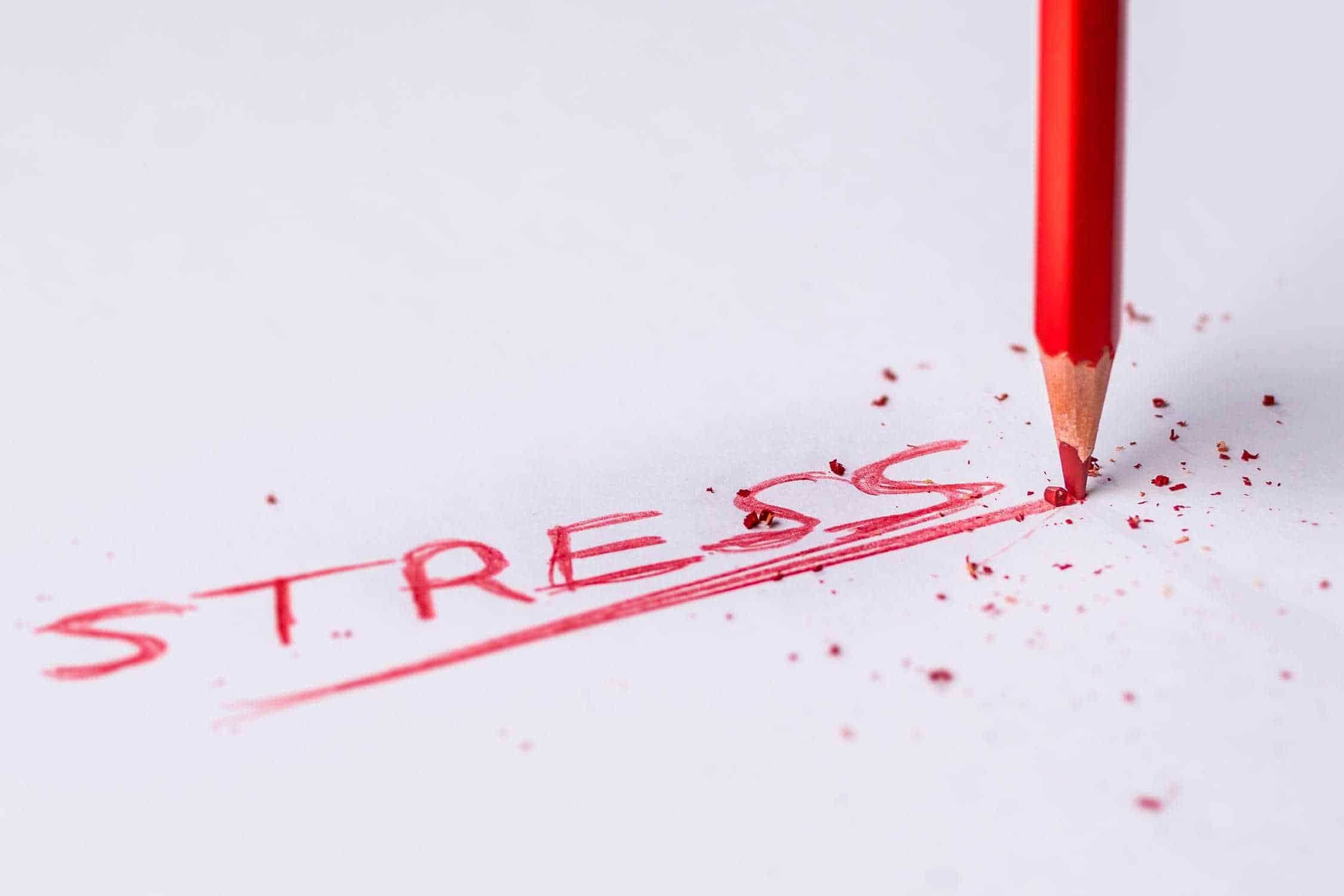
Time And Stress Management Activities You Can Use at Work
Are you aware of how you've been spending your time? Are you feeling stuck, with no way to get out of a grinding daily stress?
The first step to relieving workplace stress and seeing straight again is to take stock of how you've been spending your time.

1) Identify the Root Cause of Your Workplace Stress
Look at your schedule. Identify exactly where you're becoming frustrated and feel you're wasting time.
According to research by McKinsey, some workers spend 28% of their work week managing email, and another 19% digging around for information.
If that sounds like how you spend half (or more) of your work day, it's time to set some boundaries. Make some changes so you don't keep losing half your day to these kinds of tasks.
Learn from the best.
For inspiration, take a look at some of history's greatest minds and their personal daily routines. Here are just a couple, collected by the good people at InfoWeTrust.com.

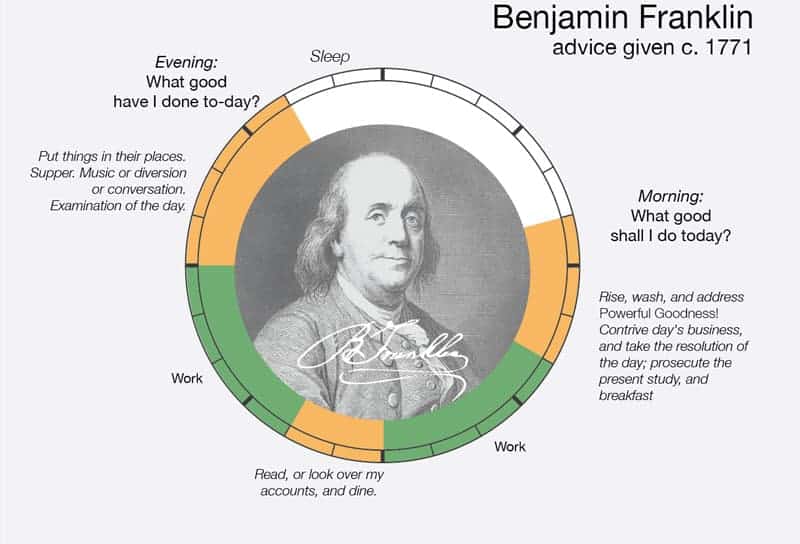
Charles Darwin seemed to sneak in his most productive work hours between short bursts of exercise, social time, and meals. Meanwhile, Benjamin Franklin used many of his wakeful hours for rigorous self-reflection and planning.
Most importantly, the schedules of both Franklin and Darwin (and others like them) were truly their own, and not dictated by someone else's agenda. They also strictly boxed time for different activities, so they would have some time for everything important to them.
See for Yourself: Sketch your own 24 hour clock. What does your typical workday look like?
Now, draw another clock with your most ideal schedule. How does it look? Where is it different from your typical workday?
As you head into next week, consider how you can make your day more like your ideal schedule; schedule time for things you've been meaning to get to, and get your email and routine tasks boxed into time so they don't eat your whole day.
When you take back control of your schedule, you may be surprised how much it helps you also control workplace stress.

2) Focus on your PQO
Ask yourself: during your focused work periods, are you making what matters happen? In other words, are you focusing on your Prolific Quality Output (PQO)?
Prolific Quality Output is a term coined by Brendon Burchard in his book High Performance Habits. He describes PQO as,
"If you want to become extraordinary, you need to figure out the productive outputs that matter in your field or industry… look back to almost any business icon, and you'll see a turning point in their career and wealth, which came about when they discovered their PQO.
For Steve Jobs, it was dumping a bunch of products from Apple's list so he could focus on massively scaling fewer products, which would change the world. For Walt Disney, it was ramping up production of movies…
Wherever PQO is found, it seems that breakthroughs and wealth follow.”
Burchard recommends you spend at least 60% of your time on the activities that will have the most immediate and dramatic impact on your business. This then leaves the other 40% to everything else.
By shifting your focus to the highest impact work, you're more likely to reach the goals creating the stress and pressure for you and your team.

3) Use the Pomodoro Technique
What if you could get more done while working less? Sounds like a pipe-dream, but maybe not.
In a 2014 article by Fast Company, shared a surprising truth:
"Using the time-tracking productivity app DeskTime, the [Draugiem Group, a social networking company] conducted an experiment to see what habits set their most productive employees apart.
What they found was that the 10% of employees with the highest productivity surprisingly didn't put in longer hours than anyone else. In fact, they didn't even work full eight-hour days. What they did do was take regular breaks. Specifically, they took 17-minute breaks for every 52 minutes of work.”
Rhythmically moving between work and regular breaks, is a great way to maintain your energy and focus throughout the day. The Pomodoro technique is one of the most popular such approaches to doing exactly that.
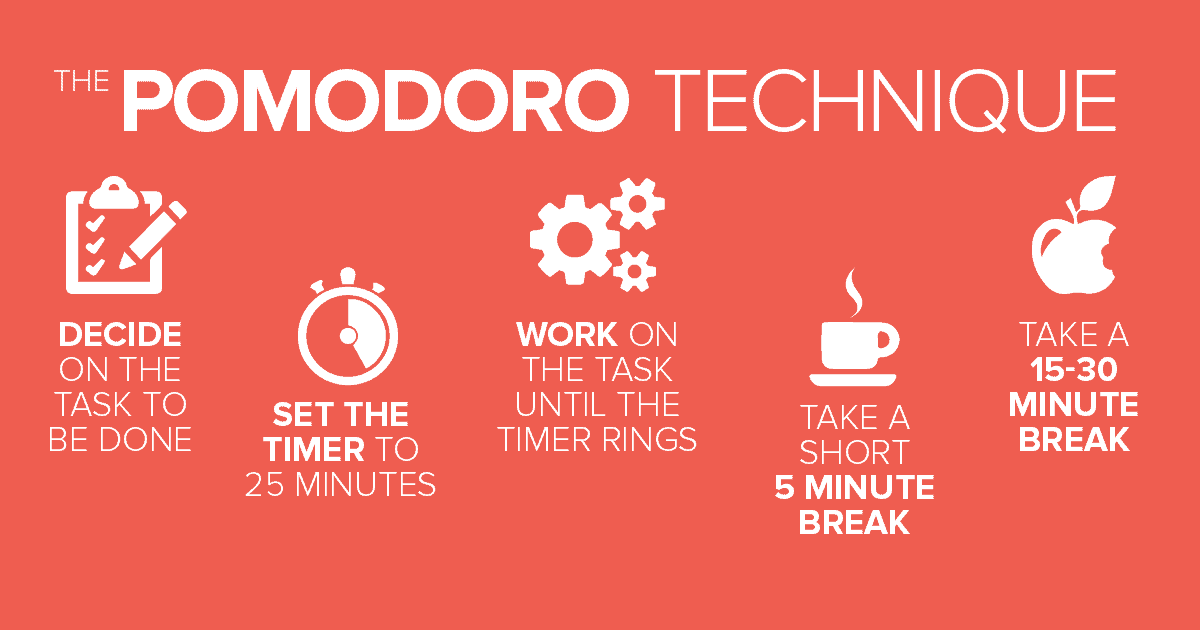
The Pomodoro technique calls for work in 25 minute intervals separated by 5 minute rest periods. To do this, simply set up a timer like the aptly-named, Pomodoro app, or one of the many other productivity apps with timers.
[Ed. note: Learn more about the Pomodoro technique in our article, Why Work-Life Balance Trumps the Hustle Hype.]
While 25 minutes of work then a 5 minute break is the default technique, experiment with what works for you. Just remember that breaks are valuable and should be built into your workday regularly.
Re-Learning Rest to Combat Workplace Stress
Now that you understand how essential rest periods are, we need to talk about *how you choose to rest*.
At home, we cram our brains with news and entertainment from social feeds and TV shows and call it rest. At work, we consider it restful to surf the net or answer emails. Something is clearly broken. There has to be (and is) a better way...
Be thoughtful about how you use your critical break periods by trying one of the following:

4) Meditation
If you've never tried meditation, it may be helpful to know that the likes of billionaire investor Ray Dalio and media mogul Oprah Winfrey both swear by it. And they aren't alone. Meditation may have started with Buddhist monks in the ancient far-east, but its rapid spread across cultures is being fueled by today's scientific research.
Studies have shown that meditation boosts the immune system, decreases depression, anxiety and stress, and improves your memory, creativity, and focus. You can learn more about the benefits of meditation and even try a guided meditation at 10% Happier.
Here are two basic meditations to get you started:
Tension Clearing Meditation
During your rest period, take five minutes to close your eyes at your desk. Focus on relaxing tension you may feel in your jaw, shoulders, and brow area — the places where most people hold their stress.
Attitude Reboot Meditation
Write down a few positive things you're grateful for, or write down some recent small wins you've had. As you write each one, close your eyes and briefly relive the moment in your imagination. You will notice your optimism rising.
[Ed note: Learn more about improving attitude and becoming more positive here: How to Use a Positive Outlook to Make Yourself a Better Leader.]
Using your break to meditate is a great way to reset your mind to be clear and ready for your next task.

5) Take a Walk
Walking is one of the easiest forms of exercise and one you can easily do at or near your workplace. Fortunately, walking is also a simple solution to alleviate workplace stress.
According to Healthline.com, walking can also improve your ability to think creatively and even add years to your life. In fact, researchers found that "walking opens up a free flow of ideas and is a simple way to increase creativity and get physical activity at the same time.”
Starting in his early days, Steve Jobs was a proponent of walking meetings. Whether taking time to think, or making his infamous recruiting pitch, "Do you want to sell sugar water for the rest of your life?” Jobs recognized their refreshing value.
When you need to clear your head, get up from your desk, and take a walk. If there's nature near your office all the better, but even a lap inside your building can help if weather doesn't cooperate to go outside.
Further Reading: Why Managers Should Take a Break
6) Re-Think Stress as a Positive
In a workplace study by Harvard University, participants who were taught to think of the stress response as positive (the heart pounding being a sign of readiness for physical movement, delivering oxygenated blood to your brain, etc.) experienced a major biological difference. The participants' blood vessels were less constricted, they showed a healthier cardiovascular profile, and it looked more like the body's response in times of joy and courage rather than in times of fear.
This idea is the central thesis of psychologist Kelly McGonigal's book, "The Upside of Stress.”
It turns out, how you think about the stress you experience makes all the difference.
Stress can be good for you, if you look at as an opportunity to do your best; then your body will respond with positive attributes like the Harvard Study. Meanwhile, if you think stress is bad, your body will also react badly to it physically. It truly is mind over matter.
Next time you feel stressed, tell yourself the truth: your body is simply preparing to rise to the challenge, and it will.

7) Eat the Frog!
Often, the sense of stress and anxiety stems from one specific, dreaded task. It's that one ‘to-do' we put off that creates a cascade of procrastination throughout the day.
To tackle this feeling, try a framework called "Eat that Frog” popularized by Brian Tracy. Here's how it works:
Each day, take the most difficult, but most important task (the frog) and tackle it (or eat it!) and do it first.
Like Franklin and Darwin's structured days, prioritize making time for your frog so it definitely gets done. This prevents needless stress building up from procrastination:
- Have some code you've been putting off cleaning up? Start your day there.
- Feeling overwhelmed by a report that's been sitting on your desk, staring you down? Take it on tomorrow morning.
- Need to make daily calls to hit your number? Do them first thing.
If it works for you, bring it to your team. This is what Chris Clark at Grove Collaborative did with his team; it's now part of their standups, and even has this hanging on the wall as a reminder:
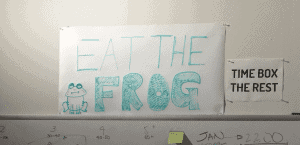
[Ed note: You can read more about Eat That Frog at Chris's startup in our post: How to Change the Culture of Your Team]
One of the best ways to reduce workplace stress is to eliminate sources of it. By making time first thing in your day to tackle your most important thing, you can reduce the mental weight hanging over you for putting off eating the frog.

8) Apply the 20-20-20 Formula
It's tempting to play the blame game and point fingers for the stress you feel. However, you must also consider how you spend your free time.
Leadership expert and author Robin Sharma suggests The 20-20-20 formula for the first hour of your day.
Here is the formula coined by Robin Sharma, as described in his book, The 5am Club:
Exercise for 20 Minutes
You'll live longer, have less stress, optimize your brain, and boost energy with daily exercise. Sharma writes, "The first twenty-minute pocket of The 20/20/20 Formula requires that you Move. Simply put, doing some sweaty exercise first thing every morning will revolutionize the quality of your days.”
Journal for 20 Minutes
Sharma then encourages reflection. He writes, "The second pocket encourages you to Reflect for twenty minutes. This segment is designed to help you reassess your natural power, boost self-awareness, dissolve your stress, fuel your happiness and restore your inner peace in an era of acute over-stimulation and excessive activity.”
You'll experience heightened positivity, restored creativity, and decreased reactivity through the simple act of daily journaling. Our earlier tips give you some ideas of what to write about (past accomplishment, happy moments, or future goals you want to visualize).
Learn for 20 Minutes
Finally, you should always be Growing. Sharma writes,
"Whether that means investing some time reading a book that will improve your understanding of how the best lives were made, or an article that will help you refine your professional prowess, or listening to an audio session on how the virtuosos accomplish their unusual results, or watching an educational video that will show you how to lift your relationships or increase your finances or deepen your spirituality… the leader who learns the most wins.”
With this morning routine, you set yourself up to make career progress, build a healthy body, and start each day with a clear mind. All of it will better prepare you to face your daily workplace stress.

Putting it All Together
Every job experiences stress on a daily basis. How you respond to and manage it makes all the difference.
As leaders, how you respond to workplace stress impacts more than just you. Your example shows the rest of your team how they should respond to stress, and your attitude impacts how the feel.
Use these tactics we discussed today to make sure stress becomes something you thrive under, instead of feeling overwhelmed.
Further Reading:
Workplace stress is an ongoing challenge for all of us, which is why we have tackled various aspects of it on the Lighthouse blog over the years. If you want to get more ideas, start here:
- Break out of the Vicious Cycle of Reactive Management with these tips
- Listen to the podcast interview of Lighthouse CEO Jason Evanish on Stress
- Take note of the single greatest source of your organizational problems (and their solutions).
- If stress if causing you to be more negative, learn how you can have a more positive outlook here.


